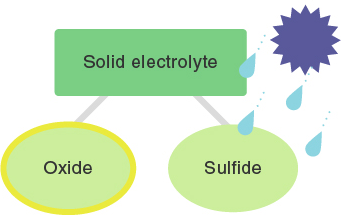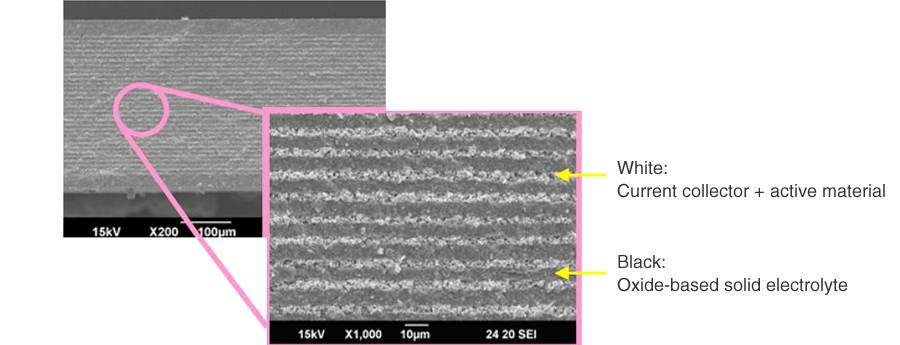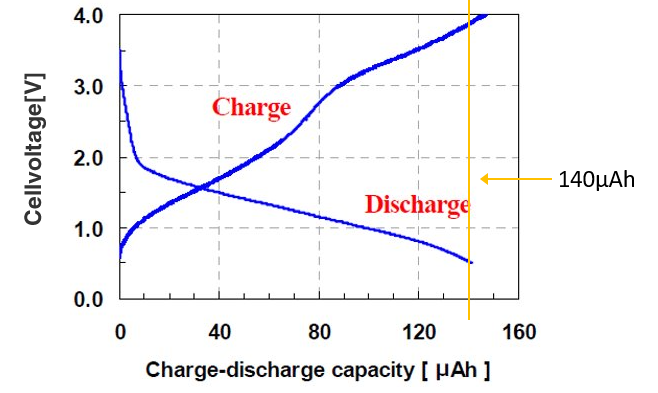Development of a solid-state secondary battery
01/15/2019
Motivation
- Lithium ion secondary batteries use electrolytic solution, which may lead to accidents such as ignition occurring due to short-circuiting caused by mechanical shock.
- If the electrolytes are entirely composed of solids, the batteries can be made extremely safe.
- We started to develop a solid-state secondary battery, seeking further applicability as energy storage components by allowing flexibility in sizing.
Issue
- If the dielectric part of MLCC (ceramic condensers) is replaced with a solid electrolyte, would it function as a battery?
- Aligning the sintering behavior of different materials is the challenge.
Results and Findings
- We succeeded in developing an oxide-based, solid-state secondary battery with charge/discharge characteristics and good reliability test results.
Background of the issue
- NAMICS has already developed the prototyping technology of MLCC, ceramic condensers.
- Our development started based on the hypothesis that replacing the dielectric part of MLCC with a solid electrolyte and an active material would enable us to produce solid-state secondary batteries.
- Commercialization of a solid-state secondary battery will enable safety, long life, and rapid charging.
Concept of the development
- Solid electrolytes are divided into oxide-type and sulfide-type. The sulfide-type has a high ionic conductivity, but there is a risk of it generating hydrogen sulfide (poisonous) in contact with water.
Therefore, we proceeded with the development with the oxide-type solid electrolyte that makes use of the safer sintering technology that is an advantage of NAMICS.

Challenge
The sintering behavior of different materials must be aligned.
Results and Findings
- We studied the materials for the solid electrolyte/active material and succeeded in developing an oxide-based solid-state secondary battery by adjusting their sintering behaviors.
A secondary battery having the charge/discharge characteristics as shown in the figure below and a good reliability test result was completed.
The internal structure of the solid-state secondary battery

Charge and discharge characteristics of 3.2 X 2.5 mm 100-layer product

| Exhibition | ICEP 2018 |
|---|---|
| Presentation title | Multilayer ceramic Li-ion secondary battery |


